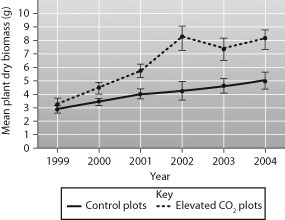The phenotype of ____ does not develop until adulthood
a. muscular dystrophy
b. Marfan syndrome
c. cystic fibrosis
d. hemophilia
e. Huntington’s disease
e
You might also like to view...
In silt-laden ________, vertebrates are more likely to have adapted to use taste, smell, or other chemical cues to find food.
a. coral reefs b. rivers and streams c. lakes and ponds d. estuaries
Movement of a molecule against a concentration
gradient is a. simple diffusion. b. facilitated diffusion. c. osmosis. d. active transport. e. bulk flow.
What likely caused the slight increase of mean poison ivy biomass in the control plots?

A) random experimental error
B) an increase in atmospheric CO2 levels
C) There were more poison ivy plants in the control plots to begin with.
In Drosophila, assume that the gene for scute bristles (s) is located at map position 0.0 and that the gene for ruby eyes (r) is at position 15.0. Both genes are located on the X chromosome and are recessive to their wild-type alleles. A cross is made
between scute-bristled females and ruby-eyed males. Phenotypically wild-type F1 females were then mated to homozygous double mutant males, and 1000 offspring were produced. Give the frequency of scute expected. A) 360 B) 425 C) 75 D) 500 E) 250